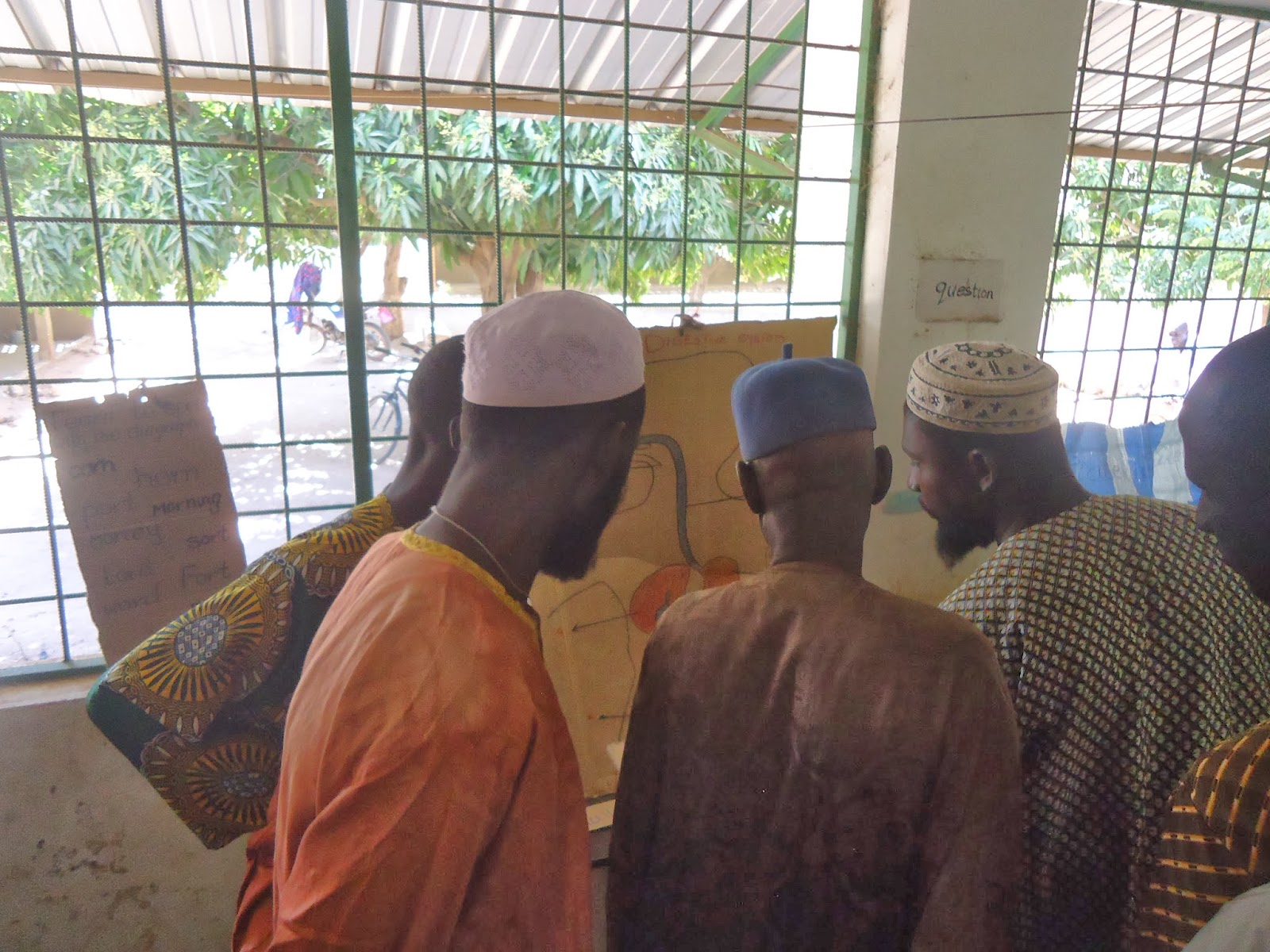Teaching aids make the content real for the students. They are able to see the concepts instead of just hearing about them. This is even more important for our students who are learning in a language that is foreign to them. Instead of listening to 1,000 English words they don't understand, they can see it. Ideally teaching aids will allow students to manipulate and interact with what they are being taught.
Faced with the lack of available teaching resources, my goal has been to encourage my teachers to create teaching aids from local materials. Back in November, I conducted a short training for my teachers on creating teaching aids, pushing them to use local materials creatively and emphasizing the importance of students interacting with and manipulating the content taught. We discussed that, while not easy, materials are available all around us. With no system for waste disposal, tin cans, cardboard, old fabric, wires, and tires can be found everywhere.
After the training, my headmaster had an idea to do a teaching aid production competition for our teachers. We designed a competition in which each teacher would create three teaching aids. We invited judges from outside our school to award marks based on the teaching aid's impact on learning, versatility to be used across grade levels or subjects, durability, use of local materials, and attractiveness.
I was thrilled with the results:
 |
| A working fan made of discarded materials. The fan blades are cardboard and the motor was taken from broken radio. |
 |
| Categorizing of food groups, each food is connected by bent paperclips. Additionally, each has a slot in which a word card can be matched the picture. |
 |
| Simple, yet so useful, overlay cards to teach place value of numbers. The reverse side has another number to identify place value. |
 |
| A map of slave trade made of cardboard pasted onto thrown wood. Many of the people stolen into slavery left Africa from The Gambia. |
 |
| Math chart for number sentences, patterns, or ordering. |
 |
| Circulatory System with labels for veins and arteries. |
 |
| A digestive system with labels for the different parts. |
 |
| Conductors and Insulators Test made of an old flashlight and various materials to be tested. |
 | ||
| A Sentence Building Stick was partly hollowed out. Cardboard words and pictures could be inserted into the slots to spell words, write sentences, or correct punctuation. |
 |
| A paper mache map of The Gambia with labels organized in a rice bag to identify landmarks, cities, regions, and tributaries. He used baobab fruit to create the paper mache. |
These are just a taste of the aids produced by my hard working teachers. Others included spelling games, model lungs, clocks, scales etc. Community members were invited to attend the event. The vast majority of adults in the village have never attended school. It was great fun to see them learning about history, geography and science.
At the finish, prizes were award to first, second, and third place, but all came out proud and excited. We have created a resource bank where we store these teaching aids. What's most successful is that everyday the teachers are coming to use these teaching aids, many of them using the aids made by their colleagues. We've spent a lot of time admiring our teaching aids in the resource room, discussing their possible resources. As one teacher told me, "Yamundow, this is the best kind of teaching. Now our students can see what we teach."
 |



